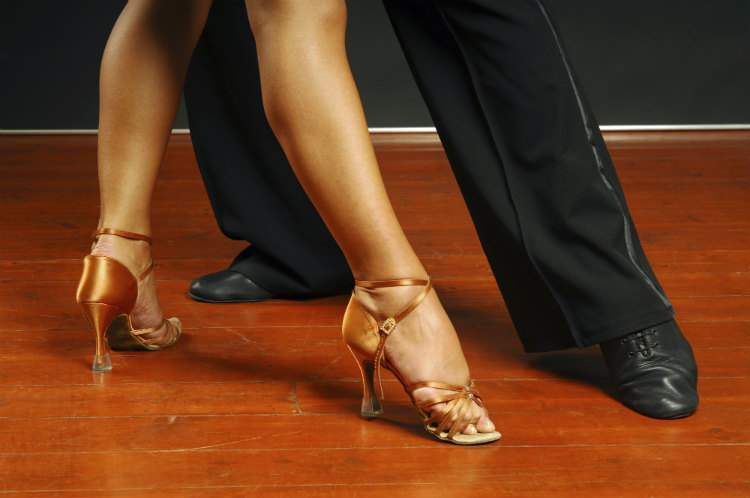Hint – Don’t Dance Like a Rag Doll
A few months into my salsa renaissance, I was feeling pretty good about myself. When paired with an experienced lead, I could maintain the illusion that I knew what I was doing. But after one particular round of dance floor flailing, it dawned on me that my limbs were all over the place – and that maybe I didn’t look as good I as I thought I did.
After you start to understand the salsa steps, it’s time to learn how to have better control over your arms, elbows, knees, and other body parts. Cleaner movements help you stay on rhythm – plus, they just look better.
I recently took the first in a series of monthly salsa workshop courses in Portland’s Dance with Joy Studios. Joshua, our instructor, spent three hours slowly going over steps that we were all familiar with to make sure that we were doing all we could to prevent any flailing. Here are a few takeaways:
1. Keep your body in a straight line
I could be over-simplifying this, but it’s amazing how much better it looks when you go through the steps with your feet together and your spine straight. In salsa – as in life, I’m afraid – appearance does matter. Holding yourself in a more collected straight line just makes the movements look cleaner. And it also makes the movements themselves easier.
Standing with your feet even shoulder-width apart makes it nearly impossible to walk in a straight line or take smaller steps. Without having some sort of a marker to remind your feet where they need to go, you are liable to take uneven and sporadic steps when you need to dance quickly. Keeping your feet together is an easy way to make sure the steps you take are in line with one another.
Posture is a no-brainer. When we imagine someone with a straight spine, often times we think of ballerinas, and it’s not for nothing that ballerinas have this reputation. When you stand up straight, your body must use core strength to support your frame, which means that you will be more engaged with the movements. If you hang your body weight on your shoulders, you will not be able to move with as much energy and control.
2. Connect with the floor
I never have been quite sure what type of steps I should be taking on the dance floor, because honestly, dancing with heels is a new thing for me. However, it makes sense that salsa — just like yoga — requires a connection with the floor, which helps with stabilization. Joshua brought our awareness to the connection between the inside of our big toe and ball of the foot with the floor.
The spot inside of the big toe and ball of the foot is a sweet spot for strength, because the inside of the foot is better for balance. Focusing on maintaining the connection of this spot to the floor even while stepping — making this more of a sliding motion — inevitably makes you look like you are gliding, and helps give you a solid base for quick movements.
3. Turn with intention
And finally, turns – a HUGE part of salsa – need to be made cleanly! Controlling the way your body spins is something that beginners often overlook (we are way more concerned with actually knowing when to spin). I used to just kind of go for it, but I often felt a little out of control while doing so. My partners would have to reign me in, and I knew I was doing something wrong.
In Joshua’s class, we practiced turning slowly, marking points on the floor with our feet so we didn’t over-exaggerate the turn. Joshua also showed us how to use our arms to wind up and get more spin out of a smaller setup — while making sure to keep our upper bodies straight. Mirrors are so important for this exercise. When you look at yourself in the mirror, it becomes easier to see where you are going wrong.
And of course, it always helps to have a great instructor like Joshua, who has infinitely more experience than you!
If you’re in the Portland area, check out Dance with Joy Studios. They offer great classes and know-how for entering the PDX salsa scene. And if you’re a dancer in general, remember not to dance like a rag doll!


Leave A Reply